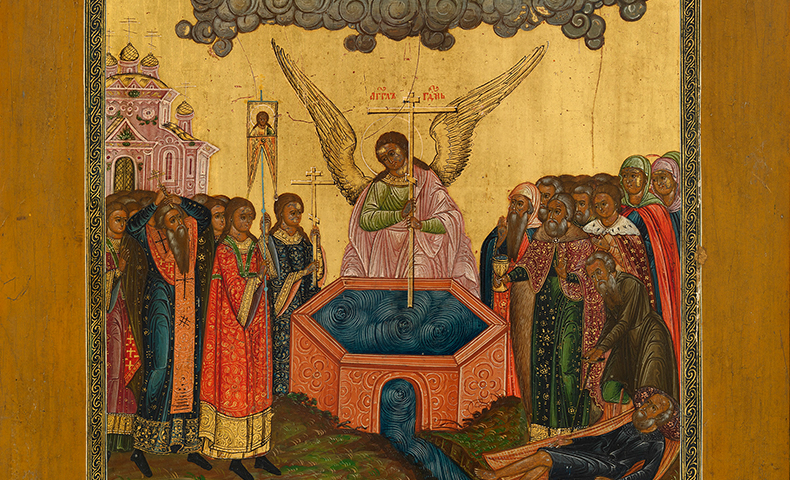Exaltation of the Holy Cross, feast of the day for 14 September

The story of the Exaltation of the Holy Cross
At the beginning of the XNUMXth century, Saint Helena, mother of the Roman emperor Constantine, went to Jerusalem in search of the holy places of the life of Christ. He razed the XNUMXnd-century Temple of Aphrodite, which according to tradition was built over the Savior's tomb, and his son built the Basilica of the Holy Sepulcher on that spot. During the excavation, the workers found three crosses. Legend has it that the one upon whom Jesus died was identified when his touch healed a dying woman.
The cross immediately became an object of veneration. In a Good Friday celebration in Jerusalem towards the end of the XNUMXth century, according to an eyewitness, the wood was removed from its silver container and placed on a table along with the inscription that Pilate ordered placed over Jesus' head: Then “All the people pass one by one; all bow, touching the cross and the inscription, first with the forehead, then with the eyes; and, after having kissed the cross, they go on “.
Even today, the Eastern Catholic and Orthodox Churches celebrate the Exaltation of the Holy Cross on the anniversary of the dedication of the basilica in September. The festival entered the Western calendar in the 614th century after Emperor Heraclius recovered the cross from the Persians, who had taken it away in 15, XNUMX years earlier. According to the story, the emperor intended to bring the cross back to Jerusalem on his own, but was unable to move forward until he took off his imperial clothes and became a barefoot pilgrim.
Reflection
The cross is today the universal image of the Christian faith. Countless generations of artists have transformed it into an object of beauty to be carried in procession or to be worn as jewelry. In the eyes of the early Christians it had no beauty. It stood outside too many city walls, decorated only with decaying corpses, as a threat to anyone who defied Rome's authority, including Christians who refused sacrifice to the Roman gods. Although believers spoke of the cross as an instrument of salvation, it rarely appeared in Christian art unless it was disguised as an anchor or Chi-Rho until after Constantine's edict of tolerance.